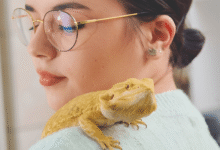
The Positive Reinforcement in Pet Training
Pet training has undergone a significant transformation with the widespread adoption of positive reinforcement. In this modern approach, pet owners are moving away from traditional methods that rely on punishment and are embracing techniques that motivate and reward pets for desired behaviors. In this article, we explore the concept of positive reinforcement, examining its definition and the multitude of benefits it offers to both pets and their human companions.
Read More: The Benefits of Training Your Pet
Benefits of Positive Reinforcement

Positive reinforcement is not just about teaching tricks; it encompasses a range of benefits that contribute to a positive and nurturing training environment.
Enhances Learning
Pets, much like humans, respond positively to encouragement. Positive reinforcement creates an atmosphere where learning becomes an enjoyable experience. By associating desired behaviors with rewards, pets quickly grasp the connection and respond more effectively.
Builds Trust and Bond
Trust is the foundation of any healthy relationship, and the pet-owner dynamic is no exception. Positive reinforcement fosters trust by creating a predictable and rewarding environment. As pets receive positive feedback, a stronger bond forms between them and their owners.
Reduces Stress
Traditional training methods that rely on punishment can induce stress in pets, leading to anxious and fearful behavior. Positive reinforcement minimizes stress levels, creating a positive and encouraging atmosphere for learning. This not only results in better-trained pets but also contributes to their overall well-being.
Types of Positive Reinforcement
To effectively implement positive reinforcement, it’s essential to understand the various forms it can take.
Treats and Rewards
One of the most common and straightforward methods is using treats and rewards. This form of positive reinforcement creates a direct association between the desired behavior and a pleasant outcome, making it highly effective in training.
Verbal Praise
Verbal communication is crucial in the human-pet relationship. Offering verbal praise and positive affirmations reinforces good behavior and motivates pets to continue exhibiting positive actions.
Play and Affection
Many pets thrive on physical interaction and play. Incorporating playtime and affection into training sessions not only reinforces positive behavior but also strengthens the emotional bond between the pet and its owner.
How to Implement Positive Reinforcement
Implementing positive reinforcement requires a strategic and thoughtful approach.
Timing is Key
Timing plays a crucial role in positive reinforcement. It’s essential to reward the desired behavior immediately to ensure that the pet associates the reward with the specific action.
Consistency Matters
Consistency is the linchpin of successful positive reinforcement. Inconsistency can confuse pets and hinder the learning process. Therefore, it’s crucial to apply positive reinforcement consistently across all training sessions.
Individualized Approach
Every pet is unique, with individual preferences and sensitivities. Tailoring the positive reinforcement approach to the specific needs of each pet ensures a more effective and personalized training experience.
Common Mistakes to Avoid
While positive reinforcement is a highly effective training method, there are common pitfalls that pet owners should be aware of.
Inconsistency
Inconsistency in applying positive reinforcement can lead to confusion in pets. To ensure optimal results, it’s crucial to maintain a consistent approach to training.
Using Punishment
Mixing positive reinforcement with punishment can negate the benefits of the positive approach. Positive reinforcement focuses on encouragement and reward, not punishment.
Overlooking Individual Preferences
Understanding what motivates each pet is critical. Ignoring individual preferences may result in ineffective positive reinforcement. For example, if a pet is not food-motivated, alternative forms of reinforcement should be explored.
Positive Reinforcement in Different Pet Species

Positive reinforcement is a versatile approach that can be adapted for various pet species.
Dogs
Dogs respond exceptionally well to positive reinforcement. Treats, verbal praise, and play are integral components of successful dog communication and training. The positive approach strengthens the bond between dogs and their owners, creating a harmonious relationship.
Cats
Contrary to popular belief, cats are highly trainable through positive reinforcement. Treats and interactive play can motivate and shape desirable behaviors in feline companions. Positive reinforcement also contributes to a more positive and enjoyable interaction with cats.
Birds
Positive reinforcement is essential in training birds. Verbal praise, treats, and social interaction play a crucial role in shaping desired behaviors. The positive approach creates a trusting relationship between birds and their owners.
Small Animals
From rabbits to hamsters, positive reinforcement can be tailored to suit the needs of small animals. Understanding their preferences and incorporating positive reinforcement into their training contributes to a well-behaved and happy pet.
Success Stories
Real-life success stories highlight the transformative impact of positive reinforcement on pets’ behavior.
Challenges and Solutions
While positive reinforcement is highly effective, it comes with its set of challenges.
Addressing Behavioral Issues
Positive reinforcement can be used to address and modify undesirable behaviors in pets. This humane approach provides effective solutions to common behavioral issues.
Overcoming Resistance
Some pets may initially resist positive reinforcement. Patience and a gradual approach can help overcome resistance and foster a positive training experience.
Integrating Positive Reinforcement into Daily Routine
Positive reinforcement is not limited to formal training sessions; it can be seamlessly integrated into daily interactions.
Training Sessions
Structured training sessions offer dedicated time for positive reinforcement, focusing on specific behaviors and commands.
Everyday Interactions
Incorporating positive reinforcement into everyday interactions reinforces good behavior in various situations, creating a well-behaved and happy pet.
Positive Reinforcement and Obedience Training
Positive reinforcement and obedience training go hand in hand.
Connection Between Positive Reinforcement and Obedience
Positive reinforcement lays the foundation for obedience by encouraging pets to willingly follow commands and exhibit desired behaviors. The positive approach makes the learning process enjoyable for both the pet and the owner.
Criticisms and Counterarguments
While positive reinforcement is widely praised, it is not without its critics.
Debunking Myths
Dispelling myths surrounding positive reinforcement, such as it applying only to certain breeds, enhances its credibility and applicability across all pet types.
Addressing Concerns
Addressing concerns about potential overindulgence and dependency on rewards ensures a balanced and effective training approach.
The Role of Professional Trainers
Professional trainers play a crucial role in promoting positive reinforcement.
Positive Reinforcement in Professional Training
Professional trainers often rely on positive reinforcement as a primary tool. This emphasizes its effectiveness in achieving long-term behavior changes in pets and underscores its relevance in professional training settings.
Research and Studies
Scientific support for positive reinforcement is abundant.
Impact on Pet Owner-Animal Relationship

The positive impact of reinforcement extends beyond behavior modification.
Strengthening the Bond
Building a strong and positive relationship with pets fosters a sense of companionship, trust, and mutual understanding.
Conclusion
Positive reinforcement stands as a powerful and humane approach to pet training. Its benefits, adaptability across species, and impact on the owner-pet relationship make it a valuable tool for fostering well-behaved and happy pets.
Read More: How to Start Training Your Puppy
FAQs
- Is positive reinforcement suitable for all pet species? Positive reinforcement can be adapted for dogs, cats, birds, and small animals, tailoring the approach to each species’ unique characteristics.
- How long does it take to see results with positive reinforcement? The timeline for results varies, but consistency and patience are key. Some pets may show progress quickly, while others may take more time.
- Can positive reinforcement be used to address severe behavioral issues? Positive reinforcement is effective for addressing various behavioral issues, but severe cases may require professional intervention and guidance.
- Should treats always be used in positive reinforcement? While treats are commonly used, other forms of reinforcement, such as praise and play, can be equally effective, depending on the pet’s preferences.
- Is positive reinforcement suitable for older pets? Positive reinforcement is suitable for pets of all ages. Older pets may take longer to adjust, but the approach remains effective in promoting positive behavior.








One Comment